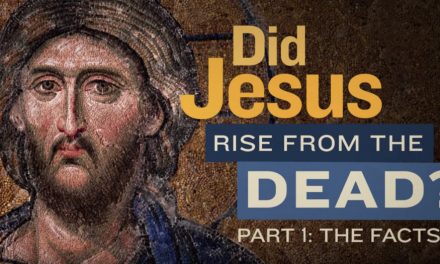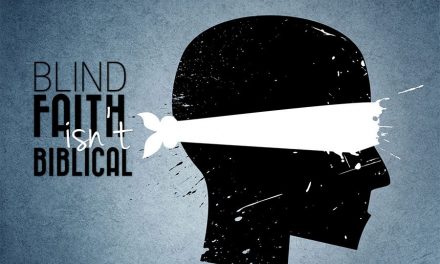By Alisa Childers
I will never forget the first time my faith was challenged intellectually. A question was asked about the literal existence of Adam and Eve, with the implication that if you still believe that they existed historically, and that the Garden of Eden was an actual geographical place, then you are just not that smart. The reasoning went something like this: “Much like the fairy tales parents tell to their children, the creation story in the Bible is not meant to be taken literally. It’s a beautiful myth that can teach us many valuable lessons about right and wrong, human nature, and how we relate to God. Only children and ‘fundies’ (fundamentalists) would believe Adam and Eve actually existed!”
Growing up in church and studying the Bible, I can honestly say that this thought had never occurred to me. Never once did I read the Genesis account of creation and pick up even the faintest hint of allegory. Was I foolish to believe it was historically true?
Before we can explore this question theologically, we need to discover if the Bible communicates this story as history or allegory. Then we need to consider how the answer to that question impacts our faith, if at all.
Does how the Bible relates the story of Adam and Eve communicate whether they really existed?
In Hebrew, “Adam” is a proper name, but it’s also a general term that refers to all humankind. “Eve” and “Eden” are also proper names, but can signify the concepts of “life” and “pleasure” respectively. All three names have symbolic significance in Hebrew. Grammatically, there seems to be some evidence that “Adam” may not even be used as a personal name until Genesis 4:25.(1)
Because of the symbolic quality of these names, some conclude that the events described in Genesis 1-4 are not historical, but are allegorical accounts of human origins that describe the effect of sin and evil on humanity.
I see three main problems with this view:
First, just as English poetry has a certain style and unique characteristics such as rhyme and meter, ancient Hebrew poetry has specific characteristics such as parallelism and rhythmic patterns. Distinguished Hebrew scholar Edward J. Young notes that Genesis 1 lacks two-line parallelism, a major characteristic of Hebrew poetry. Although the story is told in a poetic way, the Genesis account mainly exhibits the characteristics of narrative prose, which describes a series of events. (2)
Second, Old Testament genealogies treat Adam as a literal person, giving his exact age when his son Seth is born and his exact age when he dies. These genealogies also link Adam directly to Noah, and all the way to Abraham, Isaac, Jacob, and Moses. All of these figures are treated as actual historical people in the Old Testament narratives.
Third, Adam is referred to as a literal person in several places in the New Testament. Luke 3:23-38 traces Jesus’ ancestry all the way back to Adam. Paul refers to Adam as historical in 1 Timothy 2:13-14 and Jude does as well in Jude 1:14. In Acts 17:26, Luke writes that God made the nations of men from one man. Jesus Himself alludes to Adam and Eve as literal people in the gospels of Matthew and Mark, (3) and in Matthew 23:35, Jesus refers to the literal murder of Abel, Adam and Eve’s son.
It’s clear from the Biblical texts that the genre for the Genesis account is historical narrative, and that writers in both the Old and New Testaments depicted Adam and Eve as historical figures.
Does it matter if Adam and Eve really existed?
When I began teaching apologetics, a bright teenaged boy asked, “What would it mean for salvation if Adam and Eve never existed?”
This is the key question.
In Romans 5:12-17, the Apostle Paul explains that sin entered the world through one man, Adam. He then connects this directly to salvation coming through one man, Jesus. In 1 Corinthians 15:22 and 45 he communicates that death came through the “first Adam,” and life has come through the “last Adam.”
It is not difficult to recognize that something is wrong with the world, and specifically, with humans. We are fallen. The Bible teaches that sin entered the world because of Adam’s choice to disobey God, and that we inherited that “sin nature” from Adam.(4) If sin didn’t enter the world at a specific moment in history, the only explanation for our fallenness would be that we were all created in a sinful state, and therefore could not be held accountable for our sin. If we are not accountable for our sin, we don’t need a Savior. The truth of a literal Adam speaks to the core truths of the gospel itself. We are guilty, and we need a Savior.
Richard B. Gaffin Jr. wrote,
The truth of the gospel stands or falls with the historicity of Adam as the first human being from whom all other human beings descend. What Scripture affirms about creation, especially the origin of humanity, is central to its teaching about salvation. (5)
The Bible teaches that Adam and Eve literally existed and that their existence matters. In fact, the gospel depends on it.
(1) Bill T. Arnold, Encountering Genesis, p. 33
(2) John C. Collins, Genesis 1-4: A Linguistic, Literary and Theological Commentary, 43
(3) Matthew 19:4-6; Mark 10:6-9
(4) Psalm 51:5; Psalm 58:3; Romans 5:19; 1 Corinthians 15:22;
Romans 5:12-21
(5) Richard B. Gaffin Jr., No Adam, No Gospel, p. 5












